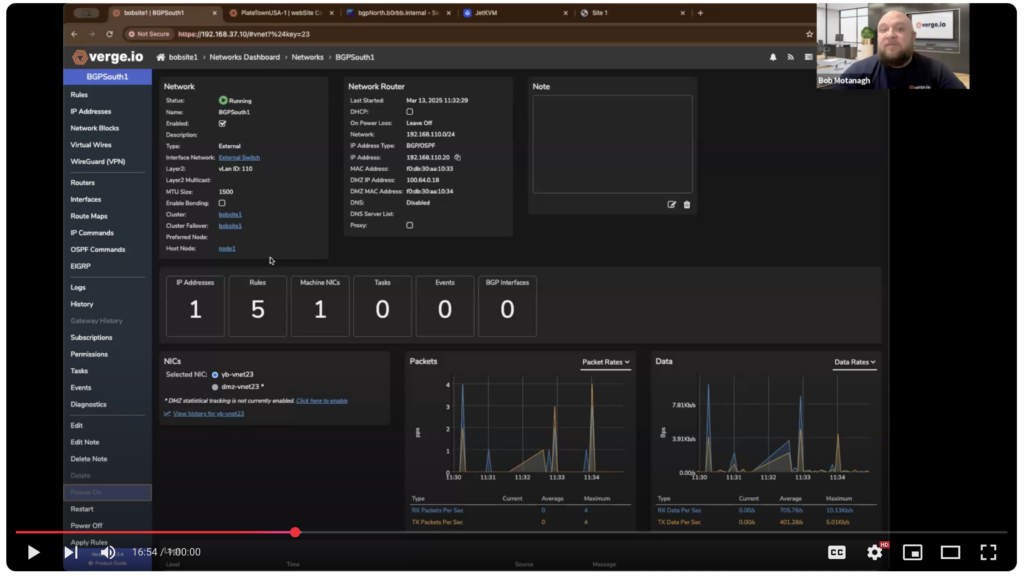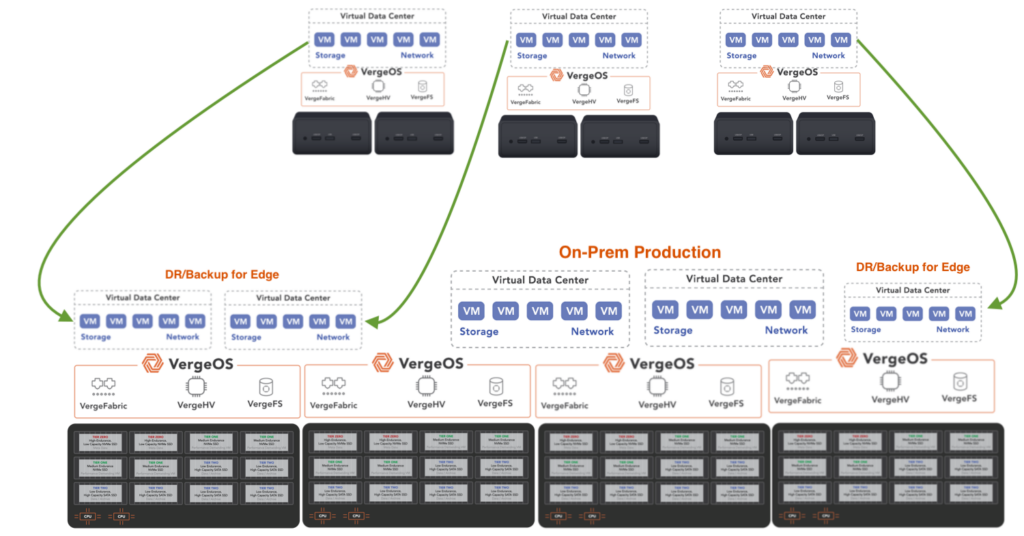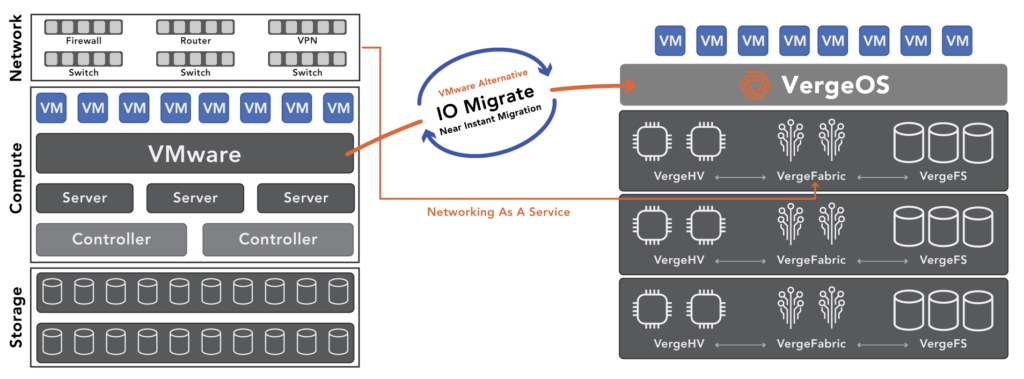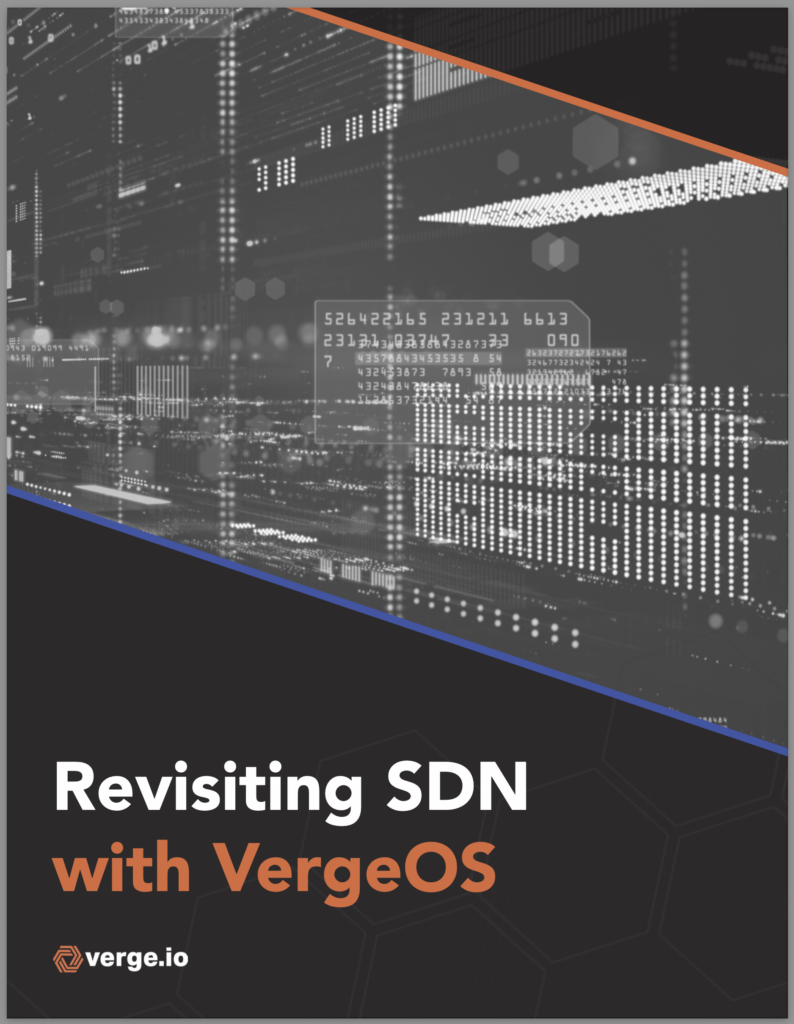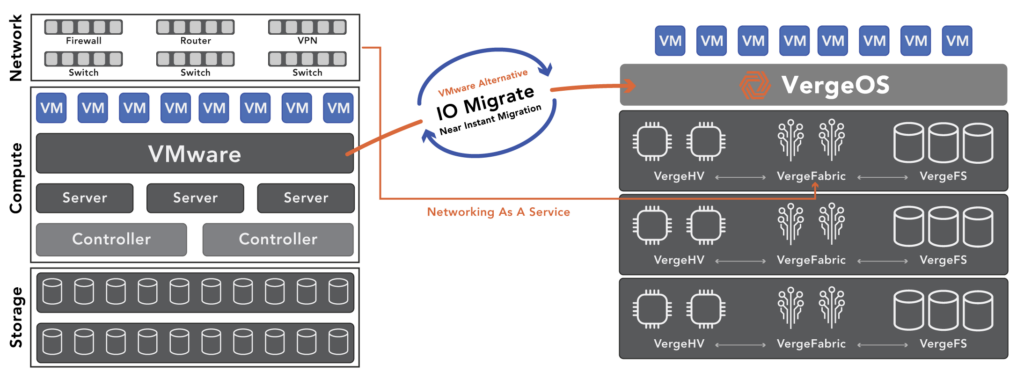Solving VDI Boot Storms is the number one requirement to driving Virtual Desktop Infrastructure (VDI) adoption. VDI has become essential for organizations supporting remote workforces, educational institutions, healthcare providers, and engineering firms. However, despite its advantages, VDI deployments frequently face significant storage challenges—especially during boot storms.
Why Do VDI Boot Storms Occur?
Boot storms happen when many virtual desktops simultaneously boot up or log in, causing a sudden surge of storage activity. Traditional storage architectures, including most virtual SAN (vSAN) solutions, struggle to handle these simultaneous I/O demands, resulting in significant latency and reduced performance.
The vSAN Bottleneck
Although vSANs are appealing for their potential cost savings, their architecture typically relies on running storage as an application inside a virtual machine (VM) under the control of the hypervisor. This additional software layer introduces significant overhead and performance inefficiencies, particularly under heavy workloads like a boot storm.
Examples of this approach include VMware vSAN and Nutanix AOS Storage. This architecture involves multiple steps for each storage request:

- The application VM sends an I/O request to the hypervisor.
- The hypervisor routes the request to the storage VM.
- The storage VM processes the request and communicates back to the hypervisor.
- The hypervisor delivers the response back to the application VM.
This multi-step interaction introduces latency, increases hypervisor dependency, and degrades overall performance, especially during intensive scenarios like boot storms. Moreover, vSAN-based solutions require storage VMs to frequently coordinate metadata and resiliency across nodes, creating additional network load and complexity.
The Scale Problem
Boot storms are particularly problematic in environments with hundreds or thousands of virtual desktops booting simultaneously. Each desktop generates a surge of storage I/O requests that must be processed in real-time. In large VDI environments, this I/O demand can overwhelm vSAN-based systems, leading to:
- Slow login times, with users experiencing delays of 2-5 minutes when starting their desktops.
- Unresponsive applications, as latency spikes impact application launch times and in-session performance.
- Infrastructure strain, as overloaded storage controllers and network congestion slow down overall system responsiveness.
Imagine this I/O back-and-forth between the virtual desktop, the hypervisor, and the storage VM happening 1,000 times per second while hundreds of virtual desktops are simultaneously booting. Even all-flash vSAN solutions cannot eliminate this inefficiency, as the multi-layered architecture and the need for metadata synchronization across nodes still constrain them.
The High Cost of Solving VDI Boot Storms with AFAs
Due to these limitations, many organizations resort to dedicated all-flash arrays (AFA) to handle the storage-intensive nature of boot storms. While AFAs improve performance, they significantly raise the cost per desktop, making VDI a much more expensive proposition. A storage infrastructure that should enable cost savings instead becomes one of the biggest budget concerns for IT teams.
For a more detailed breakdown of vSAN limitations and how they impact performance, read the whitepaper:
Understanding vSAN Limitations in High-Demand Environments
The Problem with Deduplication and RAID in VDI
Many storage solutions use deduplication and RAID for efficiency and data protection. However, these technologies introduce additional challenges during boot storms.
- Deduplication Bottlenecks: Deduplication optimizes storage by reducing redundant data blocks. However, during a boot storm, hundreds of virtual desktops simultaneously access the same deduplicated blocks, creating a bottleneck. A single storage controller is forced to serve thousands of requests from the same physical block, leading to I/O contention and severe performance degradation.
- RAID Parity Overhead: Traditional RAID architectures, particularly RAID 5 and RAID 6, use parity calculations to provide data protection. These calculations add substantial processing overhead. During a boot storm, the storage system must handle thousands of simultaneous read operations, forcing RAID controllers to decode parity data rapidly. This not only slows boot times but also creates an imbalance in read/write workloads.
These factors make traditional storage solutions fundamentally unfit for high-scale VDI environments.
Introducing VergeFS: A Better Approach
Solving VDI boot storms requires a highly integrated, performance-oriented storage solution to effectively overcome these challenges. VergeFS, integrated directly into VergeOS, offers a compelling alternative to traditional vSAN architectures and avoids the high cost per desktop of dedicated all-flash arrays. Unlike typical vSAN solutions that require additional software layers or dedicated storage hardware, VergeFS is built directly into VergeOS, eliminating unnecessary overhead and complexity.
Solving VDI Boot Storms with VergeFS
VergeFS’s integrated architecture ensures exceptionally efficient I/O handling, allowing it to handle boot storms seamlessly. It achieves bare-metal-level performance by simplifying data paths, eliminating the overhead commonly associated with external storage arrays, vSANs, or complex RAID configurations.
- Integrated Storage and Compute: VergeFS and the hypervisor runs within the same code base, eliminating the need for separate storage VMs and removing unnecessary I/O hops.
- Efficient I/O Distribution: Instead of centralizing I/O requests to a storage VM, VergeFS distributes them across multiple storage nodes, allowing the entire infrastructure to handle storage loads efficiently.
- Efficient Deduplication: Integrated within the same code base as VergeOS, it enhances all facets of the infrastructure and incurs immeasurable additional overhead due to sharing identical metadata.
- No RAID Bottlenecks: VergeFS replaces RAID parity calculations with a distributed mirroring approach, significantly reducing latency and improving boot performance.
The Advantages of VergeOS Deduplication
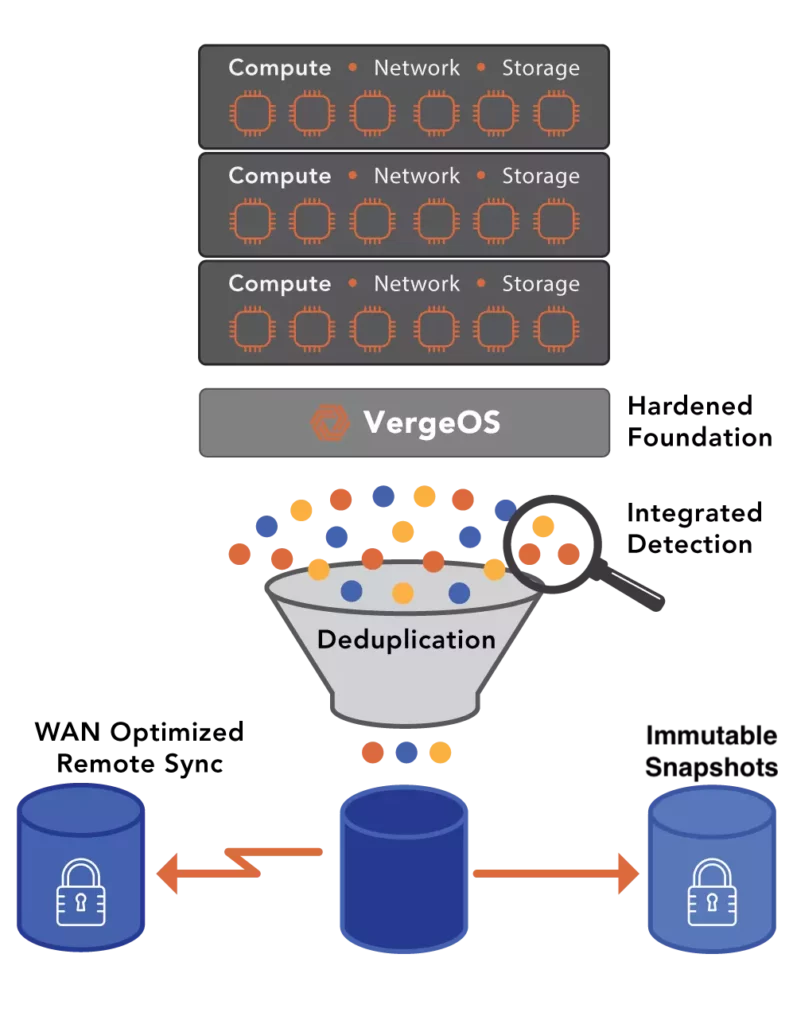
VergeOS eliminates the deduplication issue by integrating it natively within the core of its architecture. Because VergeFS and VergeOS share a common code base, deduplication is not a bolted-on feature or post-processing task—it is part of the storage fabric itself. Metadata used for deduplication is the same metadata leveraged for managing the file system and data distribution, incurring negligible overhead. This efficient design enables VergeFS to deliver the capacity-saving benefits of deduplication without compromising I/O performance during even the most demanding boot storms.
Solving VDI Boot Storms with Distributed Mirroring
One of VergeFS’s key advantages is its use of distributed mirroring, enabling multiple drives to feed data requests simultaneously. Unlike RAID configurations that require parity decoding, distributed mirroring directly serves data from multiple mirrored copies across storage drives, drastically reducing latency and increasing throughput during intensive I/O operations.
Additionally, VergeOS’ integrated deduplication offsets the capacity penalty common with other mirrored data protection models. This means IT teams get the benefits of high-performance mirroring without excessive storage overhead.
Real-World Results with VergeFS
Solving VDI boot storms with VergeFS has been independently verified by reputable third parties and at customer deployments. These proof points demonstrate the significant performance advantages of VergeFS.
- Storage Review Validation: Independent testing by Storage Review confirmed that VergeOS, leveraging VergeFS, successfully booted 1,000 virtual machines in under 70 seconds—far beyond what is possible with traditional vSAN architectures.
- 6X Faster than VMware and Omnissa: CCSI, a Desktop-as-a-Service provider and VergeIO customer, found that virtual desktops running on VergeFS booted up to six times faster compared to equivalent environments using VMware Horizon or Omnissa.

This real-world validation shows that VergeFS delivers tangible performance benefits that translate directly into improved user experience and reduced IT overhead.
The Cost Advantage
By eliminating costly add-ons like AFAs, reducing hardware requirements, and removing RAID-based performance bottlenecks, VergeFS significantly lowers the cost per virtual desktop. A VergeFS deployment is 10X less expensive than using a dedicated AFA. IT teams can scale VDI deployments more affordably while maintaining high-performance standards.
For more insights into choosing the right VDI infrastructure, download the whitepaper:
Choosing The Right Alternative to VMware Horizon and Citrix for VDI Solutions.
Conclusion
Organizations facing VDI storage challenges, especially boot storms, should strongly consider solutions designed explicitly for efficiency and performance. VergeFS, fully integrated into VergeOS, provides a proven alternative to traditional VDI storage architectures, ensuring rapid, predictable boot performance even under heavy load conditions.
By adopting VergeFS, IT teams can eliminate RAID bottlenecks, reduce complexity, avoid the high cost of dedicated all-flash storage and eliminate future storage refreshes, all while delivering a seamless user experience.
Learn more by attending our live webinar:
Register for the VDI Alternatives Webinar on March 27, 2025

